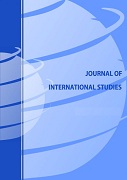Cointegration analysis of the impact of Azerbaijan and Ukraine GDPs on the trade turnover between these countries
Cointegration analysis of the impact of Azerbaijan and Ukraine GDPs on the trade turnover between these countries
Author(s): Elshar Orudzhev, Arzu AlizadeSubject(s): National Economy, International relations/trade, Economic development, Transformation Period (1990 - 2010), Present Times (2010 - today)
Published by: Fundacja Centrum Badań Socjologicznych
Keywords: cointegration; analogue of the gravity model; error correction mechanism; Johansen tests; dispersion decomposition; impulse response function; GDP; trade turnover; Ukraine; Azerbaijan;
Summary/Abstract: This article studies the integration processes between Azerbaijan and Ukraine by using the indicators of the integratedness of the GDPs of these countries and of the trade turnover between them. The annual data from 1994 to 2018 are studied as the period of monitoring. All the studied time series are non-stationary, and in passing to the time series of differences, they retain only the information corresponding to short-term changes in their dynamics; while information about long-term changes in the process, contained in those levels of variables that are lost in the transition to differences, is lost. Therefore, problems of correct modelling of the corresponding time series, of which components lead to departure from stationarity, arise. The article uses the econometric methodology of the gravity modelling of the correlation between non-stationary time series. In the modelling, econometric methods, all the necessary step-by-step statistical procedures to determine the order of integratedness of the non-stationary time series, to identify the assessment of the parameters of the model and to check its adequacy and the accuracy of short-term and long-term predicted values are correctly used by applying Excel tools and the Eviews package. The departure of empirical tests from the trend is analyzed. The constructed dynamic analogue of the gravity model enables to qualitatively predict the status of integration of the foreign trade of the studied two countries. Based on the constructed model, econometrically sound recommendations that enable a dynamic analysis of effective regulation of the export and import transactions between these countries by the governments to balance the mutual trade have been developed.
Journal: Journal of International Studies
- Issue Year: 14/2021
- Issue No: 3
- Page Range: 274-290
- Page Count: 17
- Language: English

